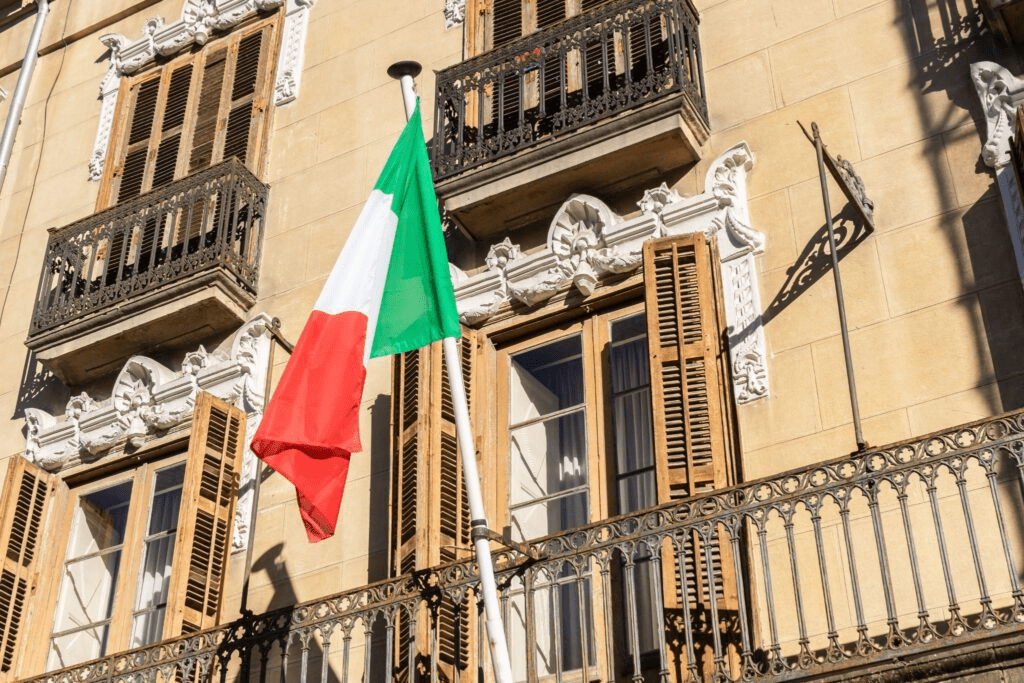Overcoming the Most Common Problems Obtaining Italian Citizenship
Overcoming the Most Common Problems Obtaining Italian Citizenship

While some applications to become an Italian citizen proceed without issues, it’s not unusual to encounter some obstacles during the process. Below, we’ll cover some of the most common problems you may run into when applying for Italian citizenship and the steps you can take to overcome them.
1. Italian Consulate Delays and Process Issues
The wait times to obtain an appointment at your regional Italian consulate might come as an unpleasant surprise. Appointments are often scheduled out for two years in some locations, and at times, there may be no appointments available at all, meaning you might be waiting just to get on the calendar.
Additionally, each consulate has its own specific requirements for your application, and the paperwork submitted to a consulate in a different part of the world will most likely not be accepted by the one with jurisdiction where you live. The process for your local consulate must be followed to the letter, or your application may be denied, and you will need to wait for another appointment to present the required documents in the correct format.
Appointments are released exclusively through the Ministry’s Prenot@Mi portal. The system is free of charge, and many consulates require you to confirm your slot online 3–10 days before the visit or it will be cancelled.
As of 2025, verify that you are eligible for administrative recognition before booking—new rules generally limit consular/municipal filings to parent or grandparent lines and impose stricter proof standards. Confirm that you meet your consulate’s proof of residency threshold, because moving consular districts may require you to re-queue. If your appointment was booked before late March 2025 and is honored by the consulate, it may be assessed under prior rules—check the consulate’s guidance.
Resolving Consulate Process Issues
To prevent long delays and deal with process challenges, you should:
- Confirm eligibility under current law (parent/grandparent scope, exclusivity at birth, and any “genuine link” or minors’ requirements) before investing time in appointments.
- Schedule the appointment at your local Italian consulate as soon as possible. Ensure you remain within that consulate’s jurisdiction and retain proof of residency.
- Gather required documents and have them translated and verified by apostille while you wait. Several consulates require recent long-form certificates, state-issued apostilles, and sworn translations. Verify your consulate’s rules before ordering documents.
- Obtain expert help to review your application before your consulate appointment.
- If you have or expect minor children, note that automatic transmission of Italian citizenship has ended. A parent/guardian must file a declaration within one year of birth (with applicable fees and limited transitional windows).
2. Missing, Inaccurate, or Incomplete Documents
As you gather together the documents required to apply for Italian citizenship by descent (jure sanguinis) or citizenship by marriage (jure matrimonii), you are likely to identify some problems. Very often your Italian ancestor might have changed their name, either intentionally or by the mistake of an immigration office. The difference in how dates are written in the European Union and the United States also means some birth certificates might not match recorded birth dates on immigration records.
Consulate guidelines state that there may not be “significant discrepancies” in your submitted paperwork and Italian vital records. Preparing your application using inaccurate information might result in your application being denied based on eligibility questions or because of the inability to clearly establish that your Italian ancestor was born in Italy.
Resolving Issues With Documents and Vital Records
If you are aware of discrepancies within your documents, or if you cannot locate a marriage certificate or other essential record, you can:
- Contact the local comune in Italy to locate missing documents. Strengthen requests with archive identifiers (fondo/serie/busta) and ask for “positivo/negativo” search letters to document results. Expect variable timelines from comune, as even routine requests can take weeks, and archival pulls may take months, so build this lead time into your application plan.
- If you can’t locate a marriage certificate, you must take into consideration the idea of applying through an Italian court. Many times ancestors were married in the S. and not in Italy.
- Obtain an official letter establishing that the document does not exist.
- If your ancestor was married in Italy but you can’t locate the marriage documents, you may obtain an official letter from the comune (the local administrative division) stating that they do not have it, then proceed to obtain the documents from the church where the wedding took place. If not found at the church, you’ll be required to go through the Italian court.
- Submit an expert opinion letter, which outlines for the consulate how the discrepancy occurred and what the correct information is.
- Seek a “one and the same” order from a judge if the consulate is not satisfied with an expert opinion letter in the case of name discrepancies with all documents in hand. Correct the applicant’s own certificates first, as these are transcribed in Italy. In some cases, minor errors are acceptable.
- Contact a reputable Italian American citizenship assistance program for additional advice.
- Use recent long-form certificates, state-level apostilles, and sworn translations—some consulates reject short forms or stale apostilles/translations.
3. Unresolved Questions About Your Eligibility for Italian Citizenship
You may firmly believe that you meet the eligibility requirements for Italian dual citizenship, but your local consulate may disagree, based on your submitted application. If you are applying for citizenship by marriage, you must have basic proficiency in the Italian language. The eligibility requirements for citizenship by descent or ancestry include a number of key dates that might cause your request to be denied.
Under current law, administrative recognition generally applies to parent/grandparent lines, and eligibility often turns on the transmitting ancestor’s exclusive Italian citizenship at the relevant birth (plus any applicable “genuine-link” or residency conditions).
However, recent court cases are calling many of these into question, and Italian courts are granting citizenship to some individuals whose ancestors were naturalized. In cases where a child of a female Italian ancestor who was born before January 1, 1948, was the cause of an application denial, the courts will often overturn the decision that the consulate was required to make under Italian law.
Courts can still provide relief in specific scenarios (such as certain 1948 maternal-line cases or wrongful denials), but judicial action does not automatically override the 2025 limits. Outcomes remain fact- and venue-dependent.
Resolving Questions Regarding Eligibility for Italian Citizenship
If the consulate states that you are not eligible for Italian citizenship, it is important to understand the reason for that denial and that there are still steps you can take to appeal or overturn that decision.
- First, re-evaluate eligibility under the 2025 rules before changing strategy.
- Submit a revised application based on another ancestor. For administrative filings, this now usually means a parent or grandparent line. Great-grandparent paths should be assessed for judicial viability.
- Speak to experts in the field to identify other paths to Italian citizenship. (ITAMCAP is a valuable resource for dual Italian American citizenship assistance.)
- Move to Italy under a visa and reside in Italy long enough to qualify, and then apply for citizenship under Italian immigration law.
- File a case in Italian court asking that they grant an exception for reasons of gender equity or other special circumstances.

Other Potential Problems When Applying for Italian Citizenship
The list below highlights some additional pitfalls we’re seeing now and the practical, fast fixes that can help with your application for Italian citizenship.
Planning to apply through a great-grandparent administratively
What’s changed: Post-Law-74/2025, administrative recognition generally focuses on parent/grandparent lines.
Resolving this issue:
- Recheck eligibility under current rules before booking.
- If your strongest line is a great-grandparent, look into judicial options (e.g., maternal-line/1948 cases) or alternate routes.
Failing the “exclusive at birth” test
What happens: Naturalization timing or a second citizenship can break transmission of Italian citizenship. Misreading naturalization records is common.
Resolving this issue:
- Build a full timeline (declarations, petitions, oaths, census, passports, voter rolls).
- Confirm the transmitting ancestor held only Italian citizenship at the relevant birth.
Missing the new minors’ declaration window
What happens: AIRE does not automatically cover children under today’s rules.
Resolving this issue:
- Calendar the one-year post-birth declaration immediately (generally requires both parents to declare and €250 fee per child).
- If you’ve crossed the one-year window, the declaration only takes effect if—after it’s filed—the child legally resides in Italy for at least two continuous years. For children who were minors as of May 24, 2025, note the transitional filing deadline of May 31, 2026, via your consulate.
Booking the wrong consulate after a move
What happens: Jurisdiction is tied to proof of residency. Files from outside the district are refused.
Resolving this issue:
- Assemble a residency packet that matches the consulate’s checklist (leases, utilities, tax returns).
- If you relocate mid-process, expect to re-queue at the new consulate.
Assuming court bypasses all 2025 limits
What happens: Courts remain crucial (e.g., 1948 cases, wrongful denials), but limits still influence outcomes.
Resolving this issue:
- Get venue-specific advice before you litigate.
- Collect the same quality of proof you’d need administratively.
Stale or mismatched issue dates
What happens: Mixing old/new documents triggers re-requests at some consulates.
Resolving this issue:
- Check your consulate’s document-recency policy for vital records, apostilles, and translations.
- If items exceed the allowed age, order updated certified copies and new apostilles from the issuing state.
Expecting immediate passport access after recognition
What happens: Recognition, AIRE transcription, and Italian passport scheduling run on separate timelines.
Resolving this issue:
- Plan for transcription/AIRE updates first, then a separate passport appointment.
- Keep proof of recognition handy. Some consulates allow priority requests where permitted.

Appealing or Challenging the Denial of Your Application
It is becoming more common to challenge a denial of citizenship in Italian courts, based on recent decisions that allowed many people descended from Italian women born before 1948 to become citizens on a case-by-case basis. Italian courts have shown leniency for those whose ancestors were naturalized without their consent or knowledge. Even the long waiting periods to obtain a consulate appointment have allowed some applicants to receive their Italian citizenship through the court system rather than through a consulate.
So while the most effective path for most people who are eligible is to submit a complete and accurate application to their local consulate, there are other options open to those who may be denied based on inaccurate documents, long waiting periods, or laws that many consider to be antiquated. Speaking with specialists in dual Italian citizenship will help you have the best chance of approval by your consulate and provide immediate assistance should your first application be denied.
Helping You Overcome Obstacles to Italian Citizenship
You might have applied in the past to get dual citizenship in Italy and been denied, or you may just be getting started in preparing an application. The benefits of dual citizenship include traveling under an Italian passport throughout the EU, as well as the right to live and work in the EU with health and education benefits. Don’t let a single obstacle stop you from obtaining your rights as an Italian citizen and passing these benefits on to your children.
Contact the Italian American Citizenship Assistance Program today to find out if you are eligible and how straightforward your journey can be. We are familiar with the entirety of the process of obtaining Italian citizenship for U.S. citizens, and can provide all the services you need to acquire official documents, translations, and apostilles and resolve discrepancies. Whether you apply by descent or by marriage, if there is a path to U.S./Italy dual citizenship, we will help you every step of the way.

